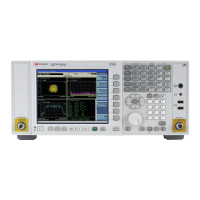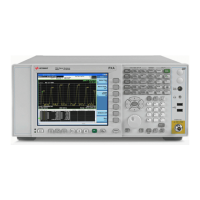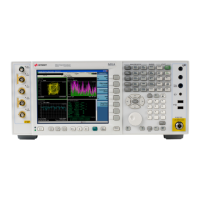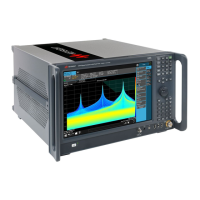130 Chapter 4
RF Section Troubleshooting
Troubleshooting
Troubleshooting
The N9000A has an internal 50 MHz amplitude reference signal that is used to
verify the low band path. Refer to Chapter 10 , “Block Diagrams” for details.
Equipment needed:
Functioning Spectrum Analyzer
DVM
Cables & Connectors
NOTE To perform the following checks, it will be necessary to remove the outer cover
and the top brace. See Chapter 13 for removal procedures.
Turn the instrument on and allow it to complete its full boot up process to
Spectrum Analyzer mode. Use the internal 50 MHz, −25 dBm calibrator signal as a
reference for troubleshooting by pressing
Mode Preset, Input/Output, RF
Calibrator
, 50 MHz on the analyzer. Now press FREQ (Channel), 50 MHz, SPAN
(X Scale)
, 1 MHz, Peak Search. The 50 MHz reference signal should measure
50 MHz @ −25 dBm ± 2 dB on the analyzer display. If the power level is within
tolerance, the low band path is functioning correctly at 50 MHz.
If the power level is not within tolerance, follow the below steps to:
• Verify 50 MHz calibrator signal (from the A9 L.O. Assembly)
• Verify 22.5 MHz IF signal (to A2 DIF Assembly)
IMPORTANT Turn off auto align by pressing System, Alignments, Auto Align, Off.

